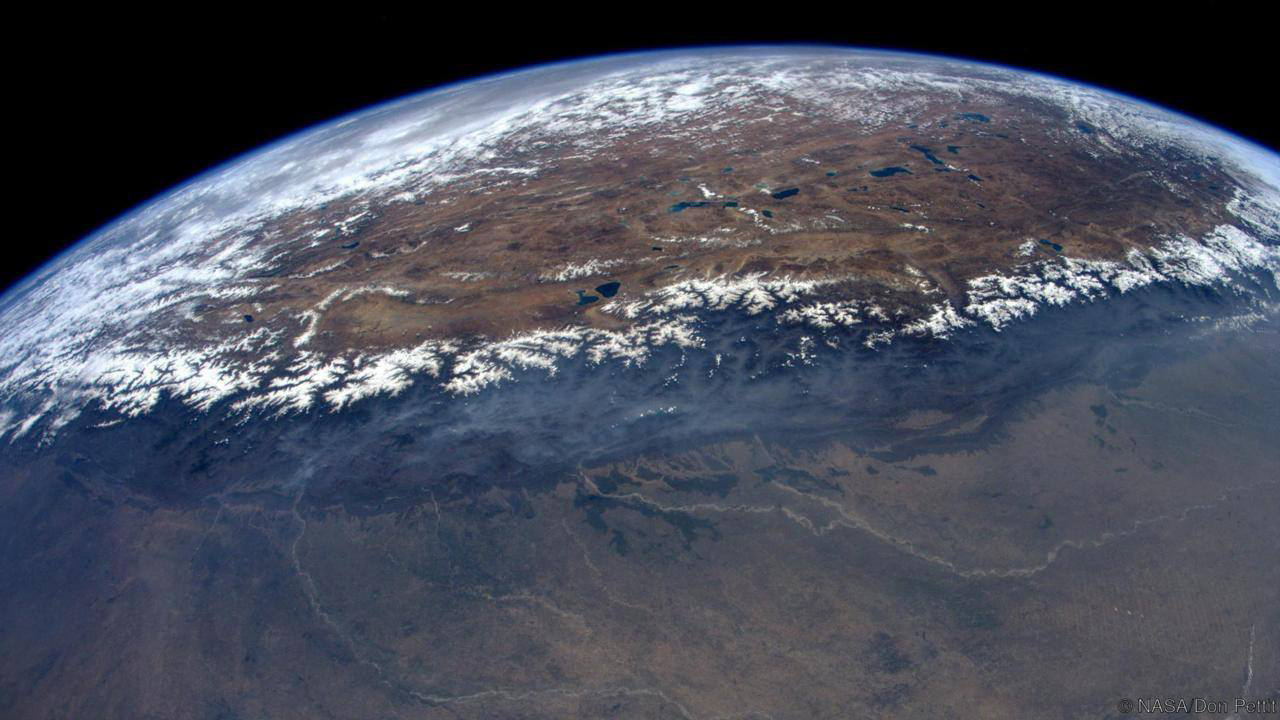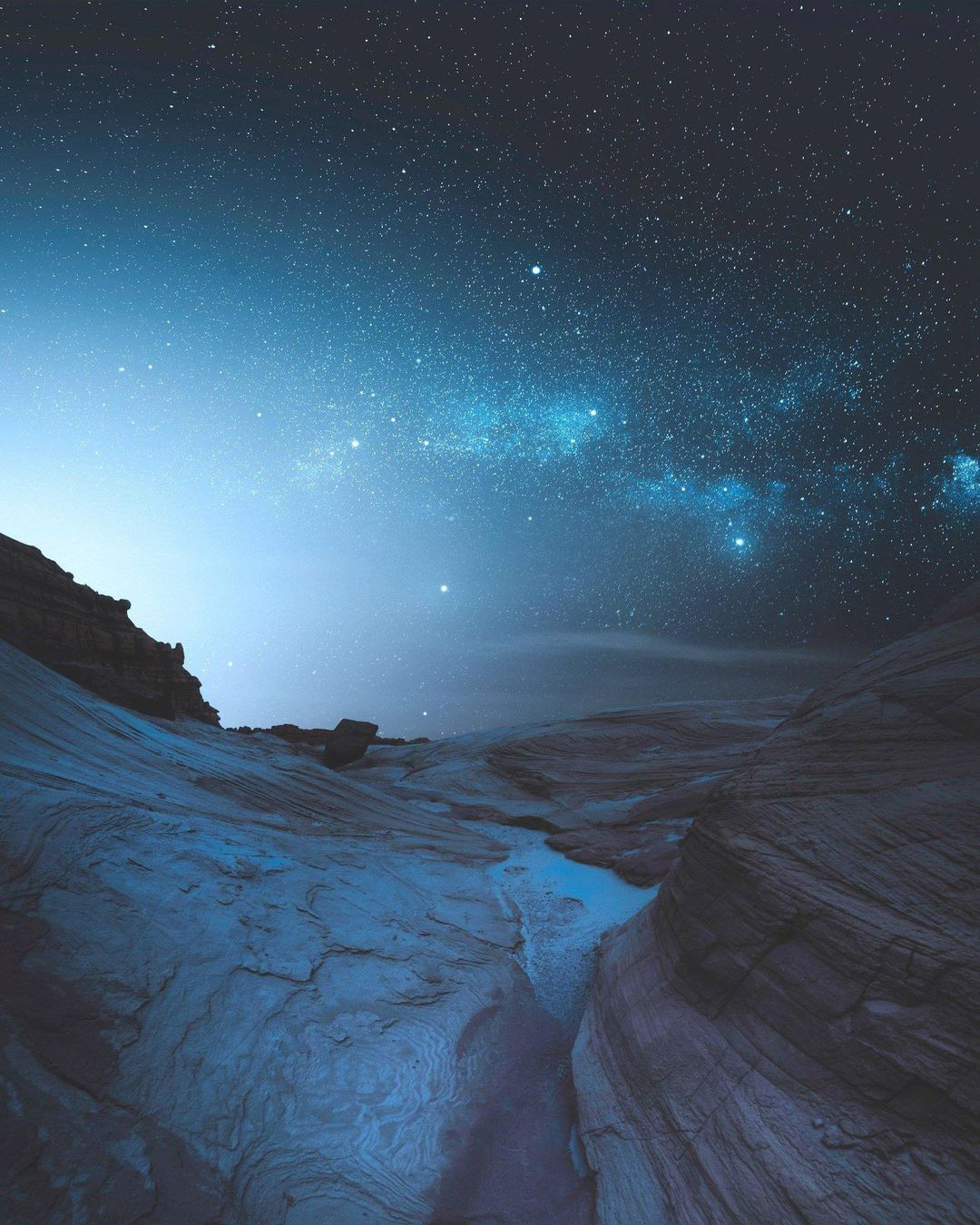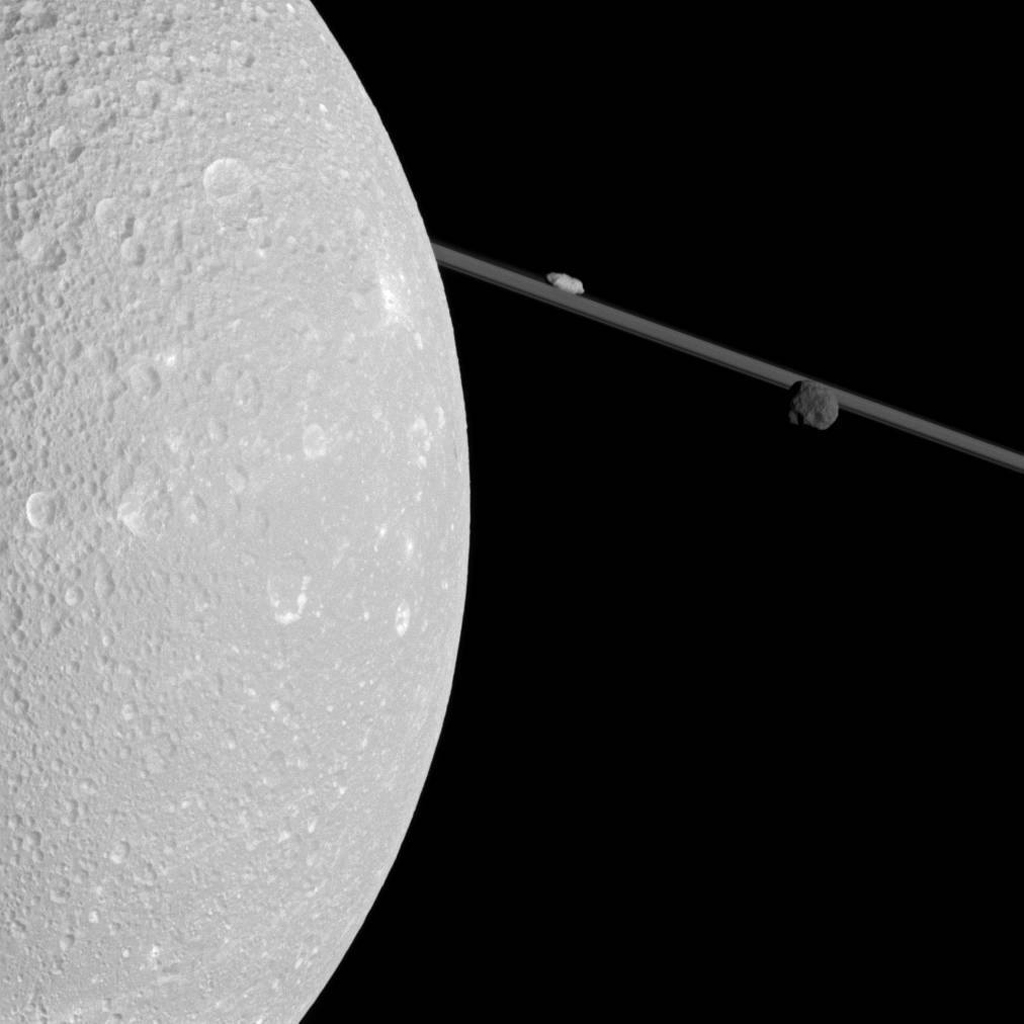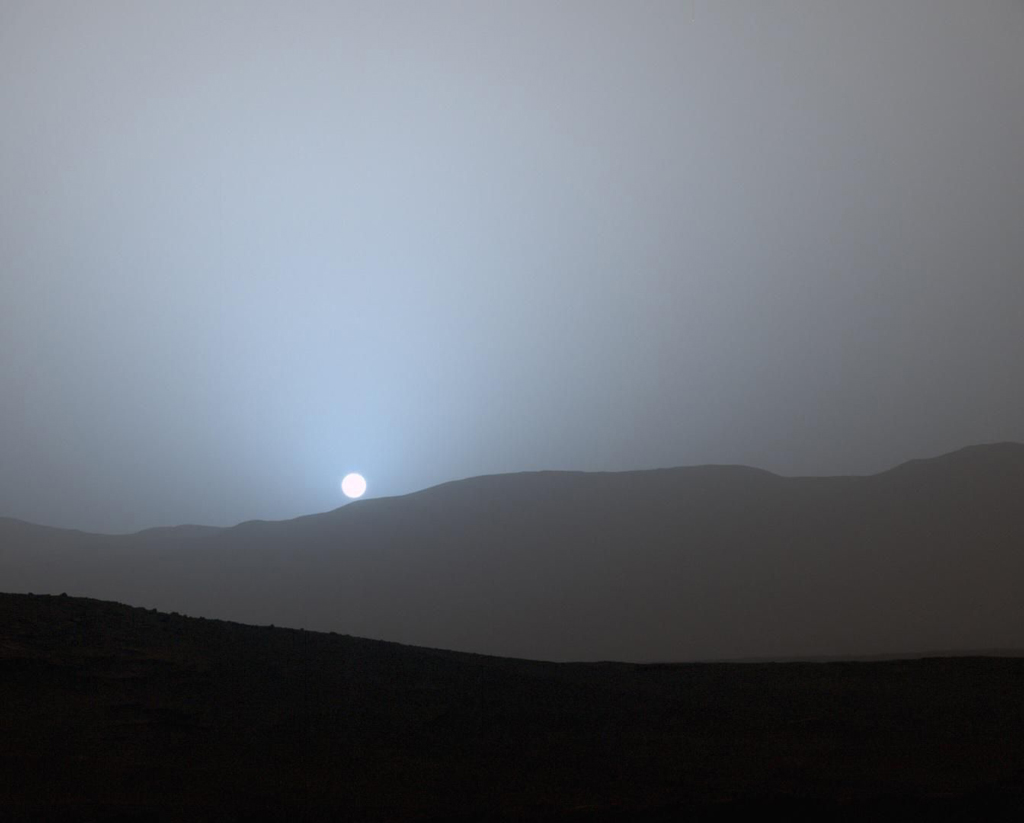Week of July 5, 2021
Welcome to our weekly recap of our Planetary Picture of the Day (PPOD)!
The Himalayas piercing Earth atmosphere, Saturn from Cassini and sunset on Mars . . . images from around the solar system to amaze you.
Monday, July 5, 2021

The Himalayas seemingly piercing through the Earth's atmosphere
This image, taken in May 2012 by astronaut Don Pettit, shows a dramatic 1000 kilometer (600 mile) stretch of the snow-capped peaks of the Himalayas. The Ganges/Ganga Plains occupy the foreground, and the numerous lakes and mountain glaciers of the Tibetan Plateau are visible beyond the mountains. The major rivers on the plains—the Ganges, Ghaghara, and Gandak—have transported vast amounts of sediment from the Himalayas over millions of years and deposited much of it in very large alluvial fans. (Justin Wilkinson)
Tuesday, July 6, 2021

Saturn by Cassini
The image was obtained with the Cassini wide-angle camera from a distance of approximately 999,000 kilometers (621,000 miles) from Saturn on May 4, 2005, as the spacecraft cruised a few degrees above the ring plane. The image scale is about 60 kilometers (37 miles) per pixel on Saturn.
Wednesday, July 7, 2021

Celestial
Composite photo taken from Goblin Valley State Park, Utah, United States.
Thursday, July 8, 2021

Closest Dione Flyby
Flying past Saturn's moon Dione, Cassini captured this view which includes two smaller moons, Epimetheus and Prometheus, near the planet's rings. The image was taken in visible light with Cassini's narrow-angle camera during the spacecraft's flyby of Dione on Dec. 12, 2011. This encounter was the spacecraft's closest pass of the moon's surface, but, because this flyby was intended primarily for other Cassini instruments, it did not yield Cassini's best images of the moon. Dione (698 miles, or 1,123 kilometers across) is closest to Cassini here and is on the left of the image. Potato-shaped Prometheus (53 miles, or 86 kilometers across) appears above the rings near the center top of the image. Epimetheus (70 miles, or 113 kilometers across) is on the right. This view looks toward the northern, sunlit side of the rings from less than one degree above the ring plane. The view was acquired at a distance of approximately 67,000 miles (108,000 kilometers) from Dione. Image scale is 2,122 feet (647 meters) per pixel on Dione.
Friday, July 9, 2021

Sunset at Gale crater
NASA's Curiosity Mars rover recorded this view of the sun setting at the close of the mission's 956th Martian day, or sol (April 15, 2015), from the rover's location in Gale Crater.
This was the first sunset observed in color by Curiosity. The image comes from the left-eye camera of the rover's Mast Camera (Mastcam). The color has been calibrated and white-balanced to remove camera artifacts. Mastcam sees color very similarly to what human eyes see, although it is actually a little less sensitive to blue than people are.
Dust in the Martian atmosphere has fine particles that permit blue light to penetrate the atmosphere more efficiently than longer-wavelength colors. That causes the blue colors in the mixed light coming from the sun to stay closer to sun's part of the sky, compared to the wider scattering of yellow and red colors. The effect is most pronounced near sunset when light from the sun passes through a longer path in the atmosphere than it does at mid-day.
"day" - Google News
July 14, 2021 at 12:09AM
https://ift.tt/3i4rnal
Planetary Picture of the Day - Week of July 5, 2021 - SETI Institute
"day" - Google News
https://ift.tt/3f7h3fo
https://ift.tt/2VYSiKW
Bagikan Berita Ini















0 Response to "Planetary Picture of the Day - Week of July 5, 2021 - SETI Institute"
Post a Comment